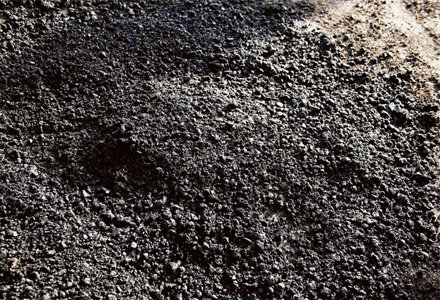
The use of reclaimed asphalt has increased over the past 30 years, and it is set to grow even more. Patrick Smith reports
In the USA, asphalt from roads is said to be the most recycled material. Figures show that up to 80% of that removed during widening or resurfacing projects is remixed to be used in new roads, sub-base, shoulders and embankments.
And in many European countries the use of reclaimed asphalt pavements (RAP) is common practice, having started more than 30 years ago. It is big business, with over 4,000 asphalt production sites and over 10,000 companies involved in the production or laying of asphalt.
Europe now produces some 25% of the world’s asphalt total (300million tonnes of hot mix asphalt and 5million tonnes of cold mixtures annually), and it is estimated that well over 50million tonnes of RAP is produced each year with, in some instances, over 70% of it being reused for road surfaces.
The goal should be to achieve 100%, says
Equipment manufacturers now incorporate or offer options on plant that make it capable of recycling old asphalt.
It has industrialised a low-temperature asphalt technology in cooperation with
“The waste product of yesterday is increasingly becoming a valuable base material that is meanwhile used in many quality asphalt recipes,” says Ammann.
Professor André-Gilles Dumont, head of
In the UK, construction company FM
The core of the operation is a new Benninghoven BA5000 asphalt plant featuring an innovative layout with a sophisticated parallel drum design that allows it to mix RAP along with fresh material to deliver a range of output grades. It is one of a few asphalt plants in the UK capable of using RAP, a development that has allowed the company to pursue its policy of boosting recycling and lowering its carbon footprint. The RAP is provided by FM Conway’s contracting arm.
“We have got five mills and we plane off the roadway ourselves. We screen it and make sure it has the right properties. We test it to make sure we have got a homogenous material,” says the site’s general manager, Tim Metcalf.
The dryer system for the fresh materials can handle up to 320tonnes/hour while the RAP is elevated through the plant at up to 240tonnes/hour. The quantities of RAP used in the mix vary, depending on factors such as available feed, throughput and the output specifications.
“In some materials we can go as high as 80%,” says Metcalf. While employing RAP as feed achieves important sustainability targets, Metcalf points out that the key driver for FM Conway using this in asphalt production is that it provides a highly cost-effective source of good quality material that helps boost the company’s profitability.
In the UK, there are only a few asphalt plants capable of handling RAP while in the Netherlands up to 30% of feed materials for asphalt production are from recycling processes, which makes sense for a country that has to import construction materials.
RSS














